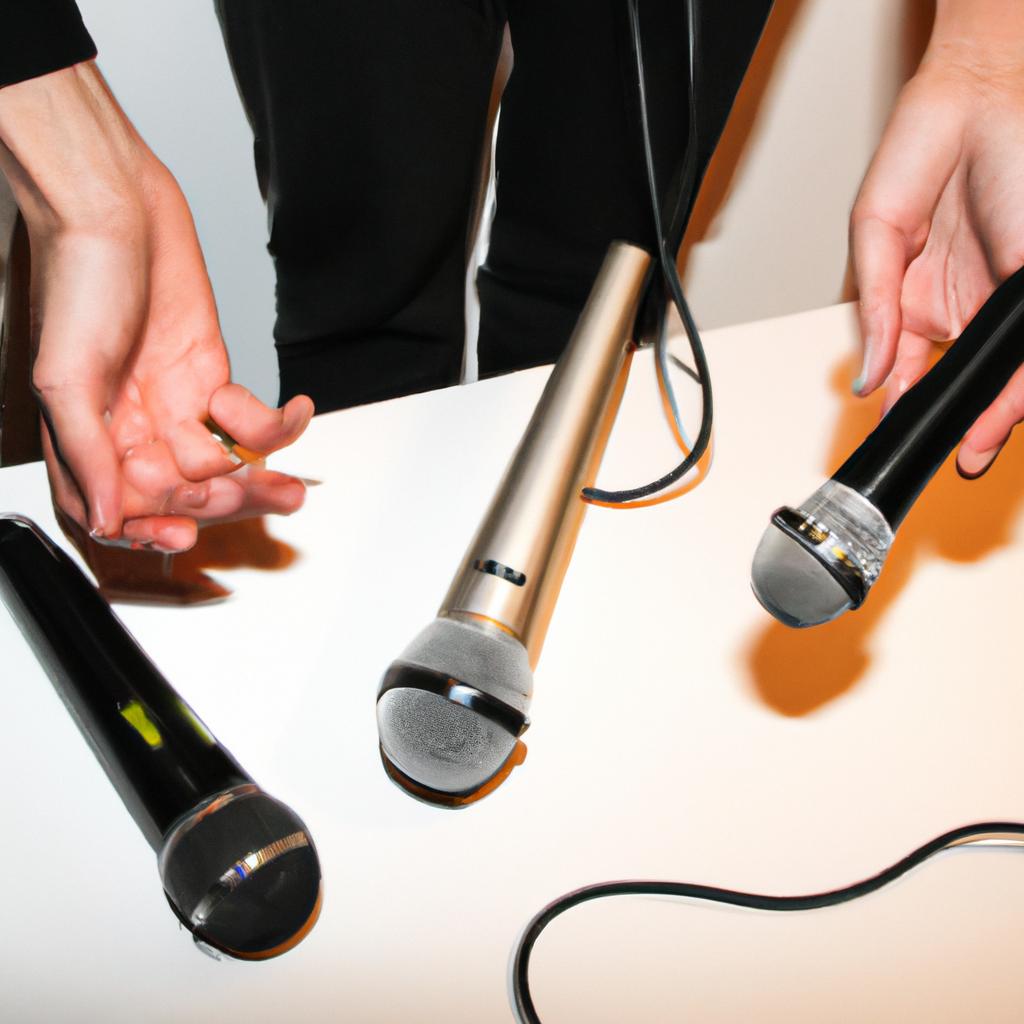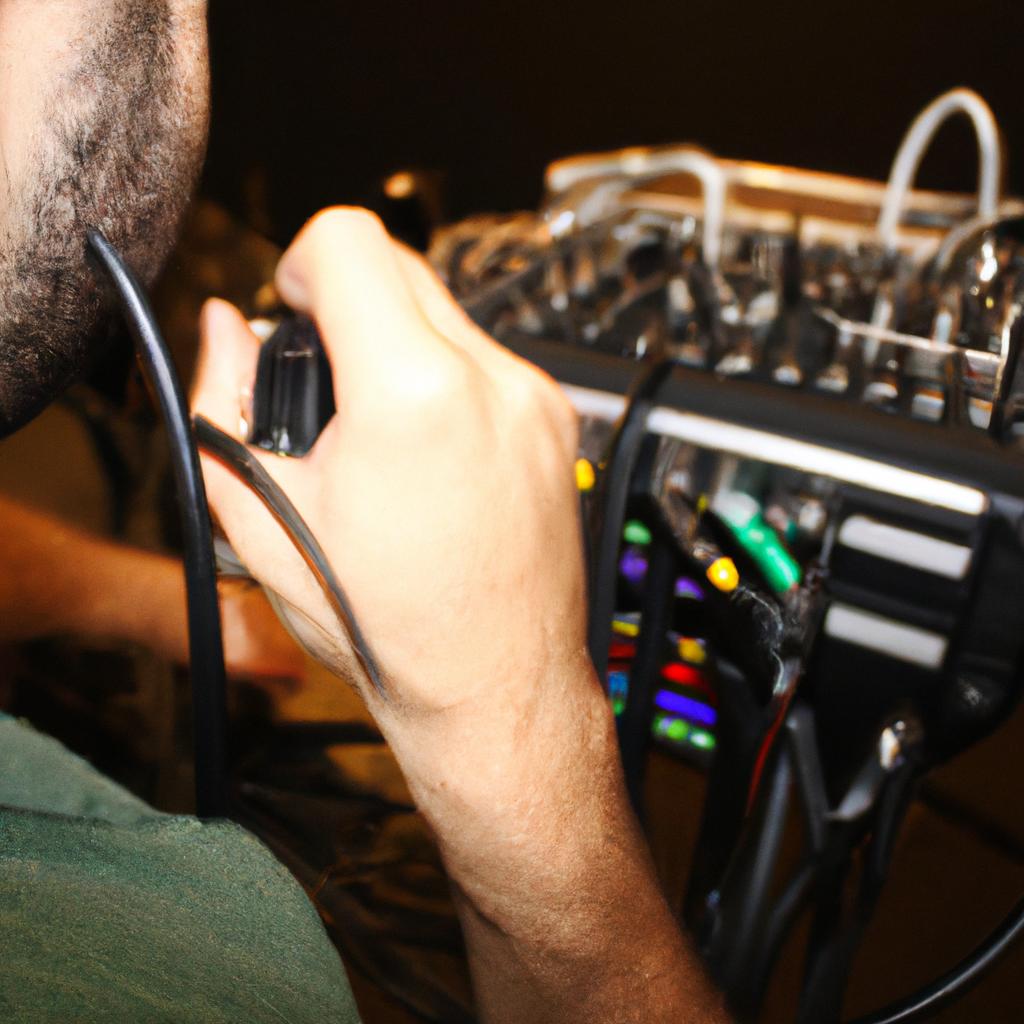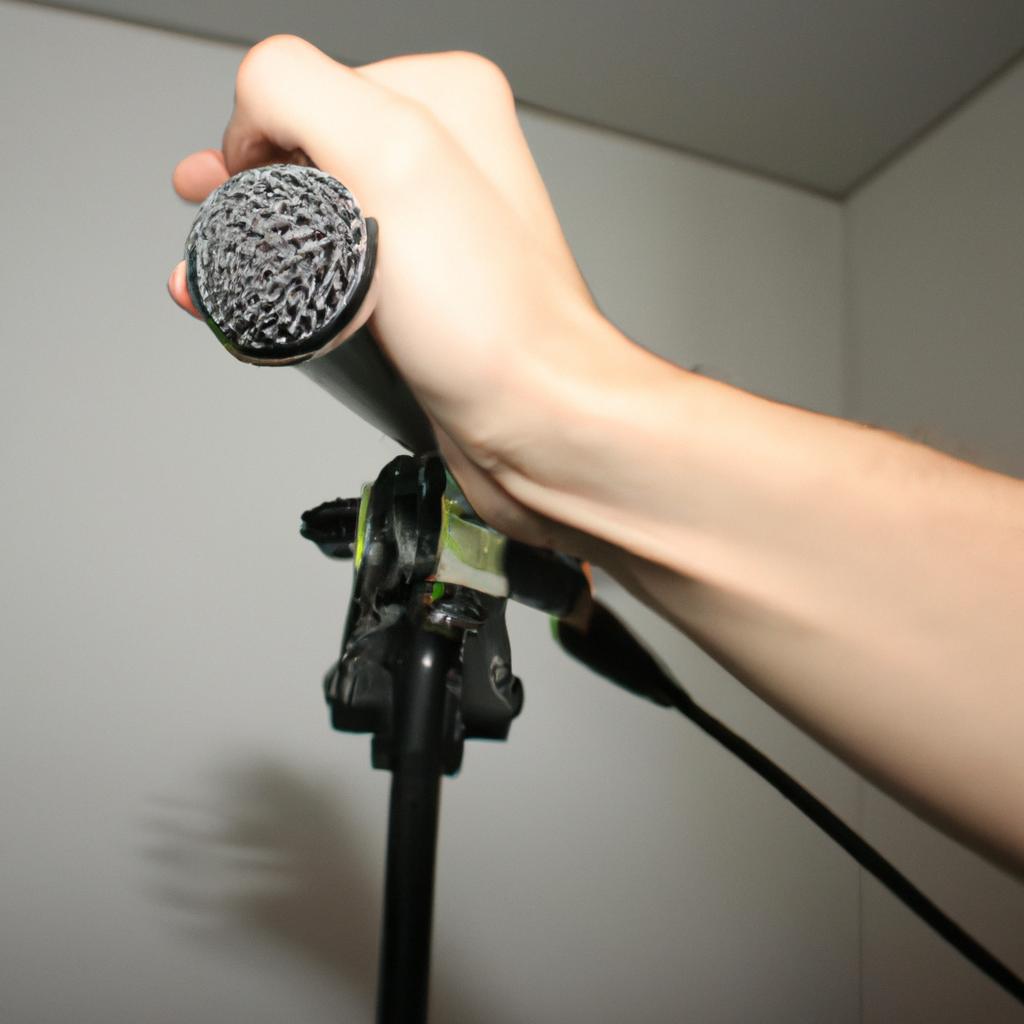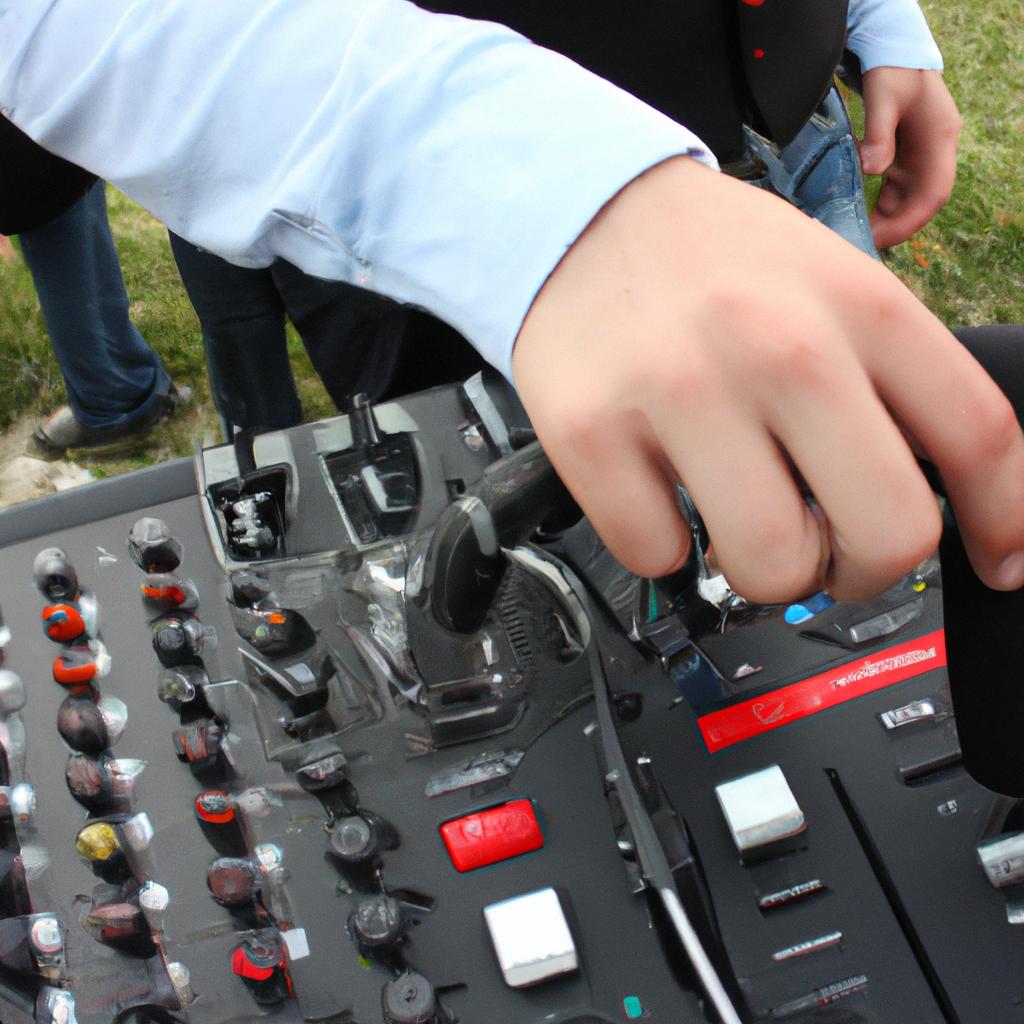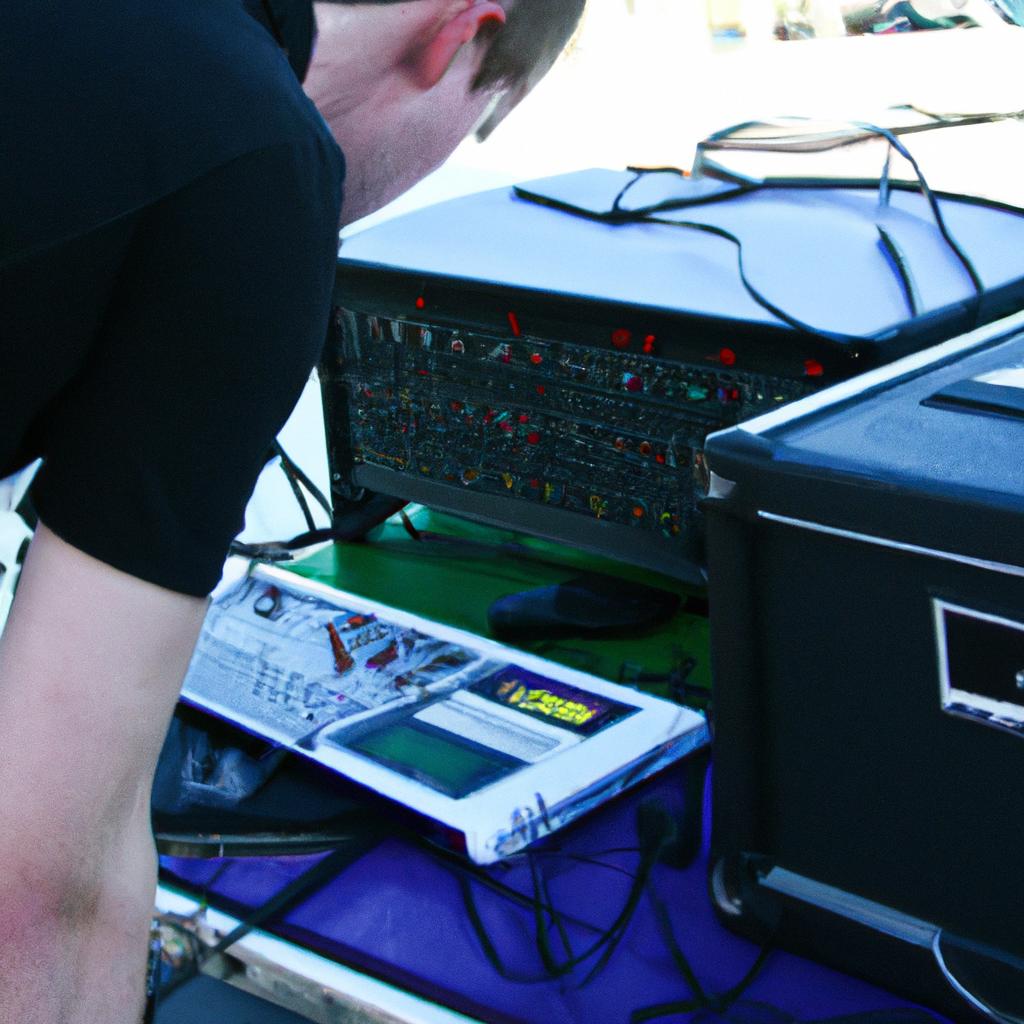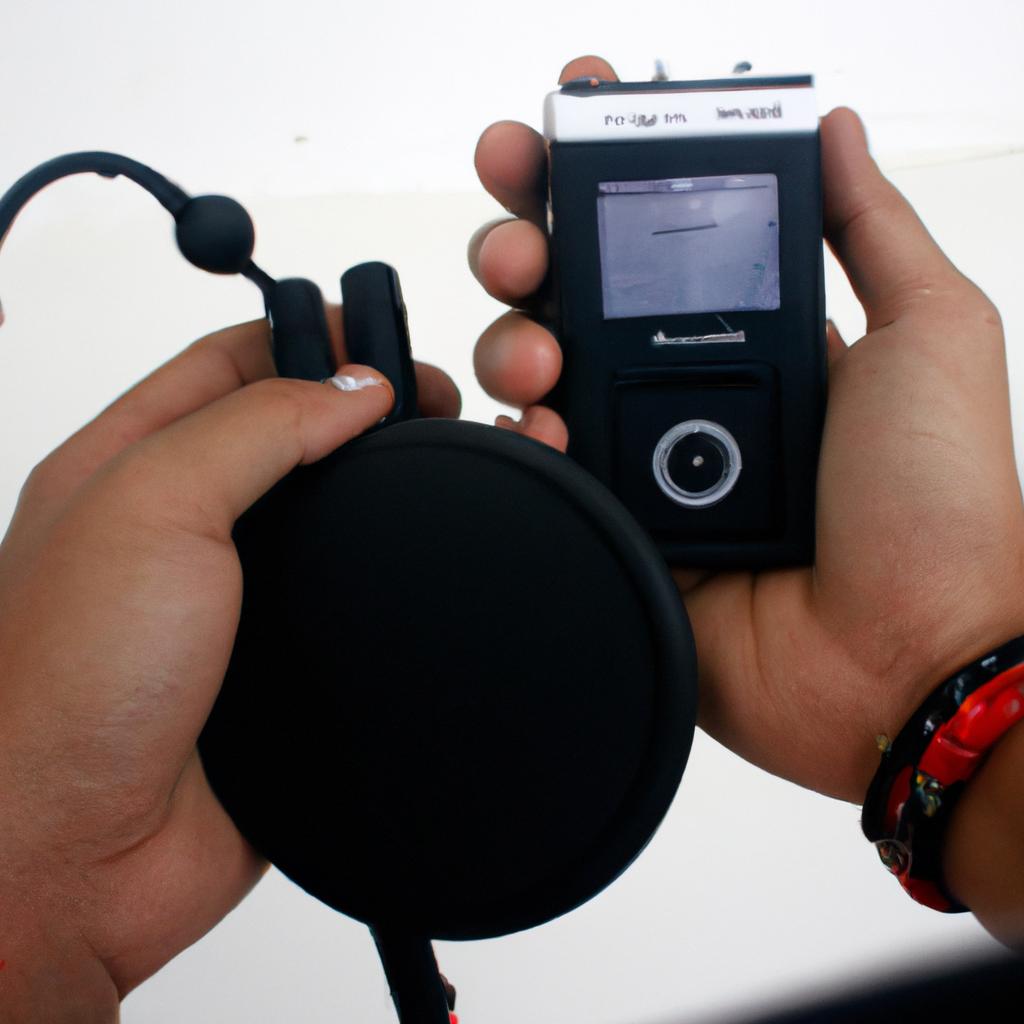Microphone Types for Sound and Vision: An Informative Overview
The world of sound production and visual media is a complex realm, where the quality of audio can make or break an entire project. One cannot underestimate the importance of selecting the right microphone type in order to capture clear and crisp sounds that enhance the overall viewer experience. To illustrate this point, let us consider a hypothetical scenario where a documentary filmmaker embarks on a journey to remote locations around the globe to capture unique cultural traditions. In such scenarios, having knowledge about different microphone types becomes imperative as it enables filmmakers to effectively record ambient sounds, interviews, and performances without compromising on audio fidelity.
In this article, we will provide an insightful overview of various microphone types utilized in sound and vision applications. The selection of microphones depends on several factors including purpose (such as voice recording or instrument amplification), environment (indoor or outdoor), noise levels (ambient or controlled), and target audience. We will delve into three main categories: dynamic microphones, condenser microphones, and ribbon microphones. Each category offers distinct advantages and limitations based on their design principles, frequency response patterns, sensitivity levels, and durability. By understanding these differences, professionals in fields like broadcasting, music production, film-making , and live performances can make informed decisions when it comes to microphone selection.
-
Dynamic Microphones:
Dynamic microphones are commonly used in high-volume environments like concerts and live events due to their durability and ability to handle loud sound sources. They work on the principle of electromagnetic induction, where a diaphragm attached to a coil moves within a magnetic field, generating electrical signals. This design allows dynamic microphones to have a robust construction that can withstand rough handling and provide excellent feedback rejection. They are often preferred for capturing vocals, drums, and guitar amplifiers. -
Condenser Microphones:
Condenser microphones are known for their sensitivity and accuracy in capturing audio. They utilize an electrostatic capacitor arrangement where a thin diaphragm acts as one plate of the capacitor while a backplate serves as the other plate. As sound waves hit the diaphragm, it vibrates, creating changes in capacitance that are converted into electrical signals. Condenser microphones require external power (phantom power) or batteries to operate, making them ideal for studio recordings, podcasts, voice-overs, and acoustic instruments that demand detailed sound reproduction. -
Ribbon Microphones:
Ribbon microphones use a thin strip of metal (usually aluminum) suspended between magnets as the transducer element. When sound waves hit the ribbon, it vibrates within the magnetic field, generating electrical signals proportional to those vibrations. Ribbon microphones are praised for their smooth frequency response and natural sound reproduction qualities. However, they are delicate and sensitive to excessive wind blasts or high sound pressure levels.
It is important to note that these categories represent just some of the many microphone types available in the market today. Each type has its own unique characteristics that cater to specific needs across different applications.
In conclusion, selecting the appropriate microphone type is crucial for achieving optimal audio quality in various sound and vision projects. Understanding the differences between dynamic microphones, condenser microphones, and ribbon microphones allows professionals to make informed decisions based on their specific requirements. By considering factors such as purpose, environment, noise levels, and target audience, individuals can ensure that the microphone they choose perfectly complements their creative vision.
Condenser Microphones
Condenser microphones are widely recognized for their exceptional sensitivity and accuracy in capturing sound. They utilize an electrically-charged diaphragm that vibrates in response to sound waves, converting these vibrations into electrical signals. This design allows condenser microphones to produce high-quality audio with a wide frequency range.
To illustrate the effectiveness of condenser microphones, let us consider a hypothetical scenario involving a professional recording studio. In this setting, a vocalist is tasked with recording vocals for a new album. By using a condenser microphone, the subtle nuances and delicate tones of the singer’s voice can be captured faithfully, resulting in a clear and dynamic vocal performance.
One notable feature of condenser microphones is their ability to capture detailed sounds across various applications. Here are some key advantages they offer:
- High sensitivity: Condenser microphones excel at picking up even the quietest sounds, making them ideal for capturing soft-spoken dialogue or acoustic instruments.
- Extended frequency response: With the capacity to reproduce frequencies ranging from low bass notes to high-frequency harmonics, condenser microphones ensure accurate sound reproduction.
- Low noise floor: These microphones have minimal internal noise levels, allowing for pristine recordings without unwanted background interference.
- Versatility: Due to their wider frequency response and sensitivity range compared to other microphone types, condensers are suitable for diverse purposes such as studio recording, broadcasting, podcasting, and field recording.
| Advantages of Condenser Microphones |
|---|
| High Sensitivity |
In summary, condenser microphones possess remarkable precision and sensitivity that make them indispensable tools in capturing audio content accurately. Their ability to faithfully record intricate details across different contexts makes them highly valuable in numerous industries where superior sound quality is paramount. The subsequent section will delve into another prominent type of microphone – dynamic microphones – highlighting its unique characteristics and applications.
Dynamic Microphones
Condenser Microphones in Sound and Vision
Transitioning from our discussion on condenser microphones, let us now explore their counterparts – dynamic microphones. To provide a real-life example, imagine a live concert where the lead singer passionately belts out powerful vocals that captivate the audience. In such situations, dynamic microphones often take center stage due to their durability and ability to handle high sound pressure levels.
Dynamic microphones are widely used in various applications for both sound recording and audio reinforcement purposes. Here are some key features that make them an attractive choice:
- Robustness: Dynamic microphones are built with sturdy construction, making them resistant to rough handling or accidental drops.
- Versatility: These microphones can effectively capture a wide range of sounds across different frequencies, making them suitable for music performances as well as spoken word recordings.
- Affordable Option: Compared to other microphone types, dynamic microphones tend to be more budget-friendly without compromising on quality.
- Noise Rejection: The design of dynamic microphones allows for effective noise rejection, reducing unwanted background sounds during recordings or live performances.
To further illustrate the differences between condenser and dynamic microphones, let’s consider the following table:
| Feature | Condenser Microphone | Dynamic Microphone |
|---|---|---|
| Sensitivity | High | Low |
| Power Requirement | Requires Phantom Power | No External Power Needed |
| Frequency Range | Wide | Limited |
| Durability | Delicate | Sturdy |
As we conclude this section on dynamic microphones, we will delve into yet another fascinating type – ribbon microphones. By exploring these diverse options, you will gain a comprehensive understanding of microphone types commonly employed in sound and vision contexts.
Transitioning seamlessly into our upcoming exploration of ribbon microphones, it is evident that each microphone type has its unique characteristics and advantages.
Ribbon Microphones
Section H2: Dynamic Microphones
Dynamic microphones are widely used in various sound and vision applications due to their durability, versatility, and affordability. One notable example of a dynamic microphone is the Shure SM58, which has become an industry standard for live performances.
When considering dynamic microphones, there are several key factors to keep in mind:
- Robustness: Dynamic microphones are designed to withstand rough handling and harsh environments, making them ideal for on-stage use or outdoor recording sessions.
- Wide frequency response: These microphones can capture a broad range of frequencies, ensuring accurate reproduction of vocals and instruments across different genres.
- High sound pressure level (SPL) handling: Dynamic microphones excel at capturing loud sounds without distortion, making them suitable for capturing powerful vocals or amplifiers in close proximity.
- Directionality options: Some dynamic microphones feature cardioid polar patterns, meaning they primarily pick up sound from the front while rejecting background noise from other directions.
To further illustrate the benefits of dynamic microphones, consider the following scenario:
Imagine being at a music festival where multiple bands perform back-to-back on an open-air stage. The environmental conditions are challenging with high levels of ambient noise and potential exposure to moisture. In this scenario, using dynamic microphones like the Shure SM58 would be highly advantageous due to their robust construction and ability to reject unwanted noise while accurately capturing the performers’ voices.
Table: Comparison of Different Microphone Types
| Microphone Type | Advantages | Disadvantages |
|---|---|---|
| Dynamic | – Durability | – Less sensitivity compared to condenser microphones |
| – Versatility | ||
| – Affordability | ||
| Ribbon | – Smooth yet vintage sound | – Fragility |
| – Natural roll-off of high frequencies | – Lower output compared to dynamic and condenser microphones | |
| – Ideal for capturing instruments with detailed nuance |
In summary, dynamic microphones offer a reliable solution for various sound and vision applications. Their durability, versatility, wide frequency response, and ability to handle high SPLs make them an excellent choice in challenging environments. However, it is important to consider the specific requirements of each use case before selecting a microphone type.
Next section: H2: Ribbon Microphones
Lavalier Microphones
Ribbon Microphones: A Vintage Sound with Modern Applications
Continuing our exploration of microphone types, we now turn our attention to ribbon microphones. These unique devices have a long-standing history in the world of audio recording and are known for their warm, vintage sound. To illustrate their versatility, let’s consider an example scenario where a band is looking to capture the rich tonal qualities of their live performance.
One notable characteristic of ribbon microphones is their ability to accurately reproduce high-frequency details while maintaining a smooth response across the frequency spectrum. This makes them particularly well-suited for capturing acoustic instruments such as violins or cellos, where nuance and delicacy matter most. Additionally, ribbon microphones excel at handling loud sources due to their relatively low sensitivity, making them ideal for close-miking guitar amplifiers or brass sections in orchestras.
To better understand the advantages and limitations of ribbon microphones, here are some key points worth considering:
- Subtle yet Warm Tonal Quality: Ribbon mics are renowned for imparting a vintage character on recordings, lending warmth and richness that may be desired in certain musical genres.
- Figure-of-Eight Polar Pattern: The bidirectional pickup pattern allows for precise control over what is being captured by rejecting sounds from the sides while emphasizing those from the front and back.
- Sensitive to Handling: Due to their delicate construction, it is important to exercise caution when positioning or transporting ribbon microphones to prevent damage.
- Phantom Power Compatibility: While many modern ribbon microphones can operate without phantom power, it is crucial to ascertain compatibility before connecting these devices directly into phantom-powered preamps.
| Pros | Cons | |
|---|---|---|
| Vintage Sound | – Adds warmth | – May not suit all genres |
| Precise Control | – Rejects side noise | – Limited pickup range |
| Versatile Usage | – Handles loud sources | – Fragile construction |
| Compatibility | – Phantom power option | – Requires careful handling |
In summary, ribbon microphones offer a unique and vintage sound that can add character to recordings, particularly for acoustic instruments or when capturing live performances. However, their delicate nature requires proper care and understanding of their limitations. With this knowledge in mind, we now shift our focus to another popular microphone type: shotgun microphones.
Shotgun Microphones
Lavalier microphones, also known as lapel or clip-on microphones, offer a convenient hands-free option for capturing audio in various situations. These small and discreet microphones are commonly used in television interviews, live performances, and video production to ensure clear and consistent sound quality. For instance, imagine a news anchor reporting from a bustling city street – by using a lavalier microphone attached to their clothing, the reporter can relay information effectively without worrying about holding a handheld mic.
When considering the benefits of lavalier microphones, several key factors come into play:
- Portability: Lavalier microphones are lightweight and compact, making them easy to carry around and set up quickly.
- Versatility: They can be easily concealed under clothing or attached to accessories such as ties or collars, allowing for inconspicuous recording.
- Flexibility: Many lavalier microphones feature omnidirectional pickup patterns, meaning they capture sound equally from all directions. This enables them to pick up voices clearly even when the speaker’s head is turned away.
- Noise reduction: By being positioned close to the source of speech (often near the mouth), lavaliers minimize ambient noise and background distractions.
| Pros | Cons |
|---|---|
| Portable | Limited range |
| Discreet | Sensitive to rubbing |
| Hands-free | Requires careful placement |
| Excellent voice reproduction | Potential interference with clothing |
In conclusion, lavalier microphones provide numerous advantages in terms of portability, versatility, flexibility, and noise reduction. Their unobtrusive design makes them ideal for applications where visibility needs to be minimized while ensuring high-quality audio capture.
Transitioning smoothly into our discussion on shotgun microphones…
USB Microphones
Section 3: Lavalier Microphones
In the world of sound and vision, lavalier microphones have become an indispensable tool for capturing high-quality audio in various settings. These small, clip-on microphones are commonly used in television interviews, documentary filmmaking, stage performances, and live events. To illustrate their effectiveness, let’s consider a hypothetical scenario where a news reporter is conducting an on-location interview.
Lavalier microphones offer several advantages that make them suitable for such scenarios:
- Portability: Due to their compact size and lightweight design, lavalier microphones can be discreetly attached to clothing or accessories without causing any discomfort to the wearer.
- Hands-free operation: With lavalier microphones being clipped onto lapels or collars, interviewees can freely move and express themselves without having to worry about holding a microphone.
- Improved audio quality: By positioning the microphone close to the source of sound (usually near the mouth), lavaliers capture clearer and more focused audio compared to other types of microphones that may pick up unwanted ambient noise.
- Reduced interference: Lavalier microphones often utilize wireless technology, minimizing cable-related issues and allowing for greater mobility during recordings.
To further understand the specifications and features of different lavalier microphone models available in the market today, refer to the following table:
| Model | Wireless Range | Frequency Response | Connector Type |
|---|---|---|---|
| Model A | Up to 100 feet | 50Hz – 20kHz | XLR |
| Model B | Up to 200 feet | 40Hz – 18kHz | TRS |
| Model C | Up to 150 feet | 60Hz – 16kHz | USB-C |
| Model D | Up to 250 feet | 30Hz – 20kHz | XLR |
This table provides a concise overview of the wireless range, frequency response, and connector type for each model. By comparing these specifications, users can make informed decisions based on their specific needs.
In summary, lavalier microphones offer practicality and audio quality in situations where hands-free operation is essential. Their portability, ability to reduce interference, and improved sound capture make them an excellent choice for professionals in the field of sound and vision.
Please let me know if there’s anything else I can assist you with!

